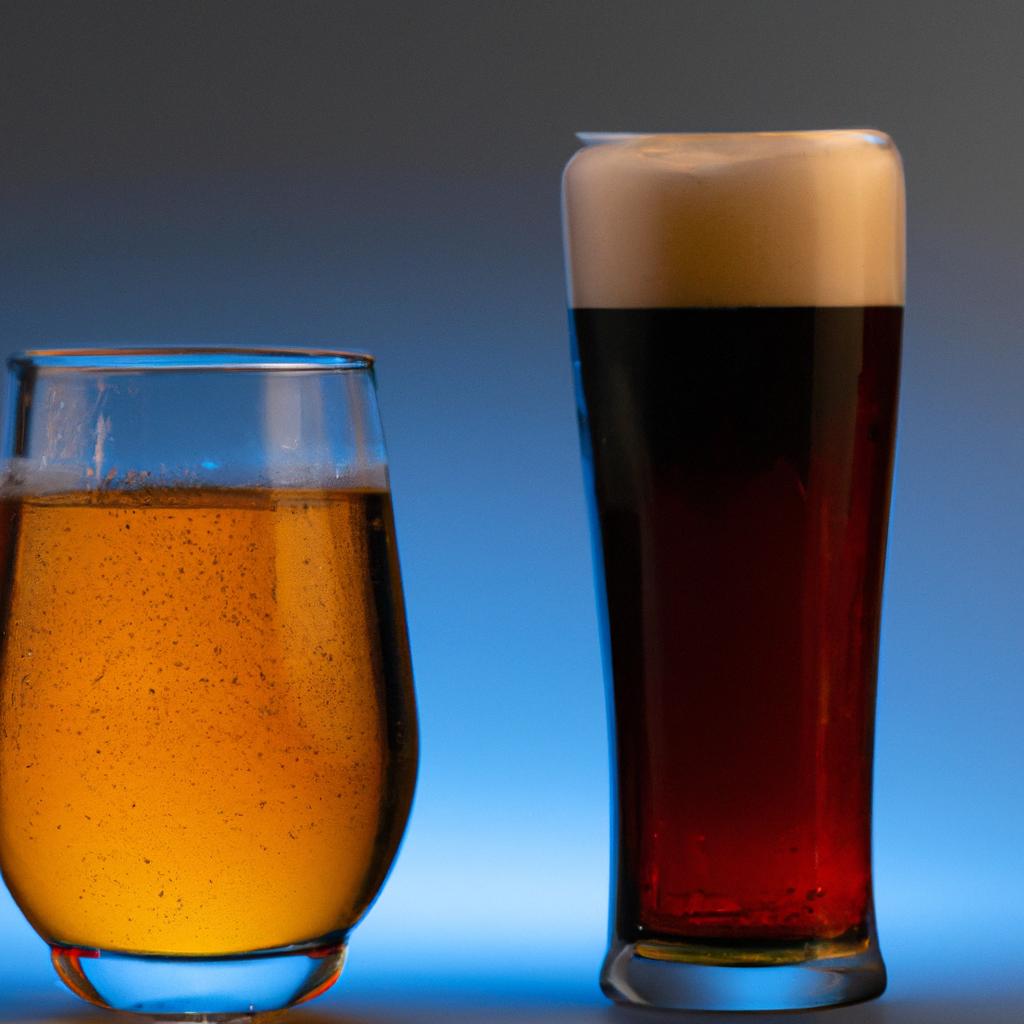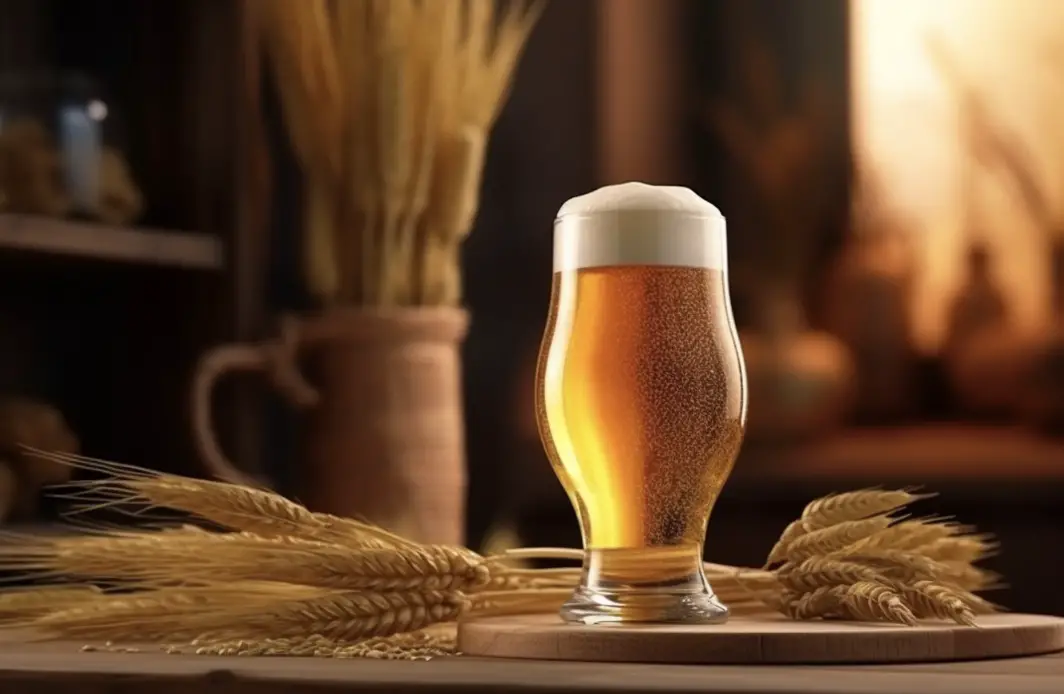When it comes to beer, the difference between lagers and ales is more than just a matter of preference.
These two types of beers are made using different ingredients, brewing processes, and flavors that make them unique from one another. In this blog post we’ll take an in-depth look at the difference between larger and stout beers – including how they’re made differently, what makes each type special in terms of taste profile and strength level as well as some fun facts about both!
The key takeaway from this article is that the difference between ales and lagers lies in their ingredients, brewing processes, and resulting flavors.
Ales are fermented at higher temperatures than lagers which results in more intense flavors due to esters produced by certain strains of yeast used during production.
Lagers use bottom-fermenting yeasts that work best at cooler temperatures producing lighter flavors like crispness or fruitiness from hops used in brewing them.
Guinness is an ale specifically classified under the category known as “stout” while Budweiser is a lager.
Lagering and aging are important parts of creating a perfect pint glass of beer every time no matter where it is enjoyed around the world today!
Lagers vs Ales: What’s the difference?
The Difference in Ingredients: Lagers and ales are both brewed with four basic ingredients – water, yeast, hops, and malt. The difference lies in the type of yeast used. Lager yeasts ferment at cooler temperatures than ale yeasts which gives lagers a cleaner taste. Ale yeasts ferment at higher temperatures which can give ales a fruitier flavor profile.
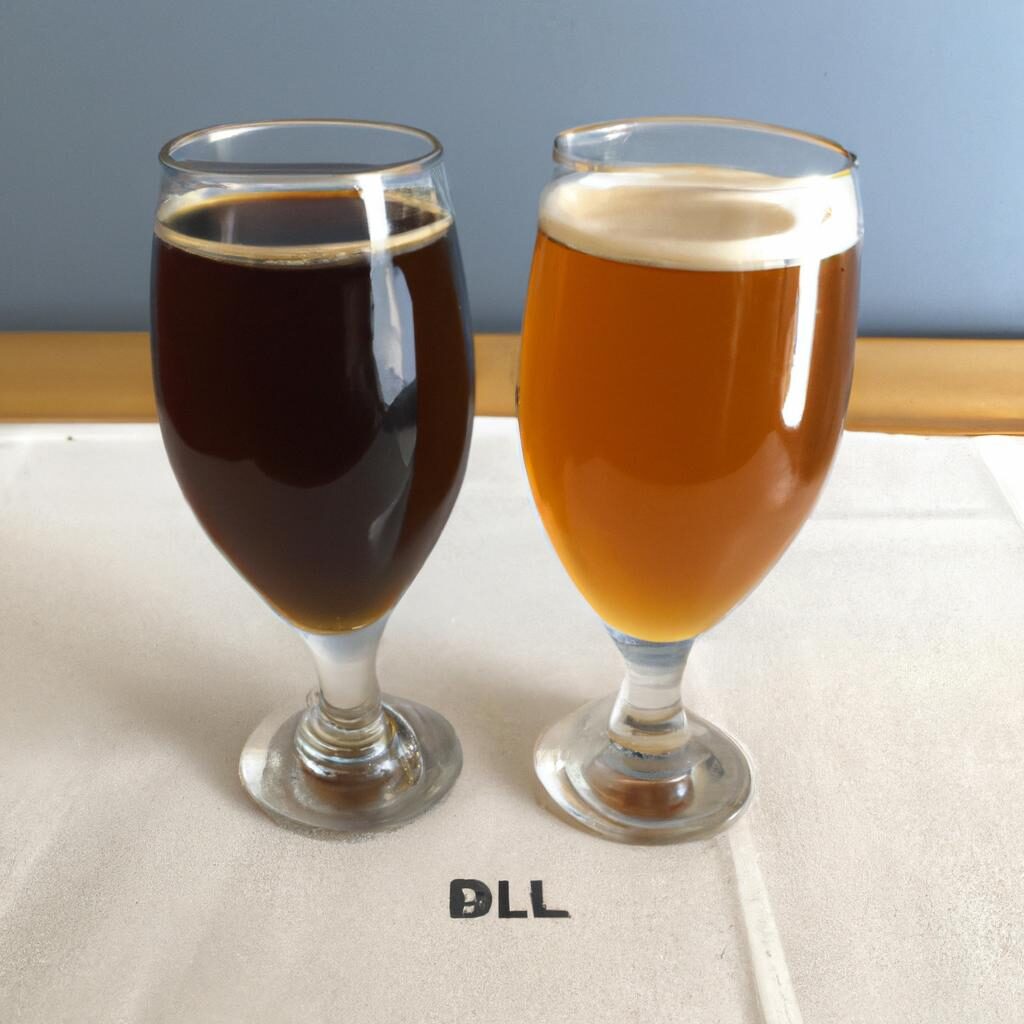
The Different Brewing Processes: The brewing process for lagers is longer than that of ales due to the cooler fermentation temperature required by lager yeasts. This extended fermentation time allows for more complex flavors to develop over time giving lagers their signature crispness and clean finish. On the other hand, ales require shorter fermentation times as they are fermented at warmer temperatures allowing them to be ready much faster but also resulting in less complexity of flavor compared to lagers.
The Difference In Taste of Ales and Lagers: Generally speaking, lagers tend to have a lighter body with subtle notes of sweetness while ales tend to have fuller bodies with bolder hop aromas and flavors such as citrus or piney notes from American-style hops or earthy tones from English-style hops. Some people prefer one over the other depending on their individual tastes but it really comes down to personal preference when deciding between an ale or a lager beer!
Is an ale stronger than a lager?: Not necessarily! Both types of beers can range from light bodied session beers all the way up to full bodied double IPAs so there’s no definitive answer here either! It all depends on what style you choose within each category – some styles may be stronger than others regardless if it’s an ale or a lager beer!
Is stout an ale or a lager?: Stouts are actually considered part of the “ale family” since they use top-fermenting yeast like most other ales do although some stouts will use bottom-fermenting yeast similar to what is used for making traditional German pilsners (which would make them technically classified as “hybrid beers”). So overall stouts could be considered either/or depending on how they were brewed specifically!
Is Guiness an ale or a lager?: Guinness is actually classified as being part of the “stout family” so it would fall under being categorized as an “ale” even though it uses bottom-fermenting yeast like many traditional German pilsners do (making this another example of hybrid beer!).
Is Budweiser Ale Or Lager?: Budweiser is classified as being part of the “lager family” because it uses bottom-fermenting yeast like most traditional German pilsners do (so no hybridization here!).
Did you know that pale ales were originally created by British brewers who wanted something different from their dark brown stouts?
They added extra amounts of hops during boiling, which gave these new brews their characteristic golden color; hence why we call them “pale” today. Additionally, Bavarian monks invented cold storage techniques back in 16th century Germany, allowing brewers there to create crystal clear golden colored beers now known around the world as “lagered”. Pretty cool!
Overall, both lagers and ales can be great for brewing hard cider, depending on the type of flavor you are looking for. Next, we’ll explore how to choose the right ingredients to create a delicious hard cider.
Main Takeaway: Ales and lagers are both brewed with four basic ingredients – water, yeast, hops, and malt. The difference lies in the type of yeast used; lager yeasts ferment at cooler temperatures than ale yeasts which gives them a cleaner taste while ales have fuller bodies with bolder hop aromas and flavors. Stouts can be considered eitheror depending on how they were brewed specifically while Budweiser is classified as being part of the “lager family”. Pale ales were originally created by British brewers who wanted something different from their dark brown stouts while Bavarian monks invented cold storage techniques back in 16th century Germany to create crystal clear golden colored beers now known as “lagered”.
The Difference in Ingredients
When it comes to brewing beer, the ingredients are what make all the difference. Lagers and ales differ in their malt bill and yeast strain. For lagers, a bottom-fermenting yeast is used while for ales, a top-fermenting yeast is used. This affects the flavor profile of each type of beer; lagers tend to be crisp and clean tasting while ales have more complex flavors with fruity notes.
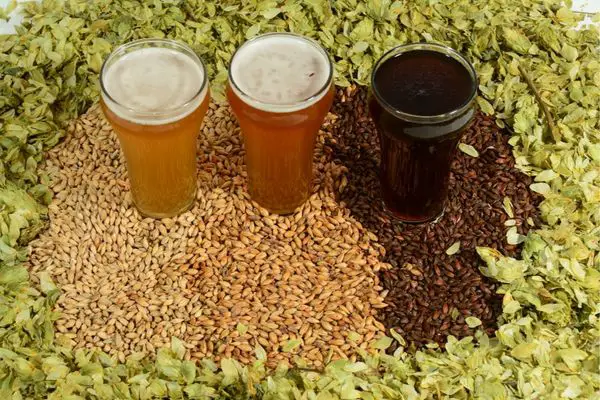
The malt bill also plays an important role in creating different types of beers. For lager brewing, pale malts such as pilsner or Vienna are often used which give a light color and subtle sweetness to the finished product. Ales on the other hand use darker malts like Munich or caramel that create fuller body beers with richer flavors than those found in lagers.
In addition to these differences between ale and lager ingredients, there’s also variations within each style depending on where you live or who’s making it.
In Germany for example, Pilsners are made using only barley malt whereas American craft brewers may add wheat or rye into their recipes for added complexity and flavor depth. Similarly, some English ales will include specialty grains like chocolate malt which gives them a unique roasted character not found in other styles of beer.
When comparing ale and lager ingredients, it is evident that different approaches are required when selecting the grain bill and yeast strain. Understanding how these two elements interact can help one brew better quality beer regardless of their preferred style.
The ingredients used to make larger and stout beers are quite different, ranging from the types of grains used in the brewing process to the amount of yeast. Now let’s take a look at how these differences affect flavor and body.
Main Takeaway: When brewing beer, the malt bill and yeast strain used can have a significant impact on the flavor profile of the finished product. Lagers are typically crisp and clean while ales tend to be more complex with fruity notes. Additionally, different regions may use unique ingredients to create their own distinct styles of beer. Understanding how these two elements interact is key in creating better quality beers regardless of style.
The Different Brewing Processes
While they may look similar in appearance, there are some key differences between them that make them unique.
The first difference is the type of yeast used during fermentation. Lagers use a bottom-fermenting yeast called Saccharomyces pastorianus while ales use top-fermenting yeasts such as Saccharomyces cerevisiae or Brettanomyces bruxellensis. The different yeasts give each beer its own distinct flavor profile.
Ingredients are also different for Brewing Lagers and Ales: The main ingredients for brewing lager beer are malted barley, hops, yeast, and water. Malted barley provides the sugar needed to create alcohol during fermentation. Hops add bitterness to balance out the sweetness from the malt while also providing aroma. Yeast helps convert sugars into alcohol as well as adds flavor to the beer. Lastly, water makes up most of what’s in a beer; it affects everything from color to body to taste.
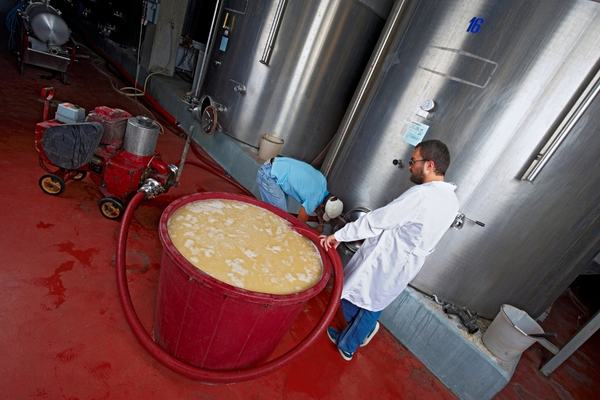
Another major difference between lagers and ales is the temperature at which they’re brewed. Lager brewing requires cooler temperatures than ale brewing, usually around 45°F (7°C). This helps create a crisper taste with less fruity esters than an ale would have. Ales on the other hand require warmer temperatures ranging from 60–70°F (15–21°C) for optimal fermentation conditions and can produce more complex flavors due to higher levels of esters produced by the yeast during fermentation.
The last major difference between lagers and ales is their aging process after fermentation has completed. Lagers typically undergo cold storage or lagering where they are stored at near freezing temperatures for several weeks or months before being packaged and sold whereas ales do not need this additional step since their flavors develop faster at warmer temperatures without any extended aging period required afterwards like with lager beers.
Finally, when it comes to carbonation levels both styles can vary depending on how much priming sugar was added prior to bottling. Generally speaking, most lagers will be slightly more carbonated than most ales due to their longer lagering periods allowing for better absorption of CO2 into solution giving them a crispier finish compared to an ale’s smoother mouthfeel overall.
Brewing larger and stout beers requires different processes, from selecting the right ingredients to fermentation techniques. Next, we’ll look at the differences between larger and stout beer styles.
Main Takeaway: Lagers and ales are two distinct types of beer that differ in their yeast, brewing temperature, aging process, and carbonation levels. Lagers use a bottom-fermenting yeast at cooler temperatures with extended lagering periods while ales use top-fermenting yeasts at warmer temperatures without any additional aging period required. As a result, lagers tend to be crisper with higher carbonation levels compared to the smoother mouthfeel of an ale.
The Difference in Taste of Ales and Lagers
While both types of beers have similar ingredients, they differ in taste due to their brewing processes. Lagers are typically light-bodied with a crisp finish while ales tend to be fuller-bodied with a more complex flavor profile.
Lagers use bottom fermenting yeast which ferments at cooler temperatures than top fermenting ale yeasts. This results in a cleaner tasting beer that is lighter in color and body compared to an ale. Lager flavors range from slightly sweet maltiness to bitter hops depending on the type of grain used during fermentation.

Ales use top fermenting yeast which ferments at higher temperatures than lager yeasts resulting in a fuller bodied beer with more complexity and character than its counterpart. Ales can vary greatly in flavor based on the type of grains used during fermentation as well as any additional spices or herbs added for flavoring such as coriander or orange peel for Belgian Witbiers or chocolate malts for stouts and porters.
Despite their differences, both types of beers share many similarities including being brewed using water, grain (usually barley), hops and yeast. Some brewers even mix different styles together to create unique combinations such as IPAs mixed with Saisons (a French farmhouse ale) commonly referred to as “Saison IPAs”.
Ales and lagers both offer unique flavor profiles that home brewers can experiment with when creating their own hard cider. Next, let’s explore the differences in brewing processes for these two beer styles.
Main Takeaway: Lagers and ales are two main categories of beer that differ in taste due to their brewing processes. Lagers use bottom fermenting yeast for a light-bodied, crisp finish while ales use top fermenting yeast for fuller body and more complex flavor. There are also hybrid styles like stouts and pilsners which combine characteristics of both lager and ale beers. No matter the style, all beers share many similarities including water, grain, hops, and yeast!
Is Budweiser Ale or Lager?
lagers and ales. Lagers are typically light in color and have a crisp flavor while ales tend to be darker with a more complex taste. So what about Budweiser? Is it an ale or a lager?
The answer is that Budweiser is actually classified as a lager. It has been brewed using the same recipe since 1876, making it one of the oldest beers on the market today. The beer itself is pale yellow in color and has a slightly sweet taste due to its use of rice as an adjunct grain instead of barley malt like most other beers.

Bud Light is also considered to be a lager despite being lighter in both color and flavor than its older brother Budweiser. This version was first introduced in 1982 and uses corn syrup as an adjunct grain instead of rice which gives it its lighter body and less intense flavor profile compared to traditional lagers such as Budweiser.
It’s important to note that neither Budweiser nor Bud Light should be confused with stouts or porters which are dark-colored ales made from roasted malts rather than grains like rice or corn syrup used for brewing lagers. Guinness, for example, would fall into this category along with other popular brands such as Samuel Adams Boston Lager or Sierra Nevada Pale Ale which are both examples of ales rather than lagers due their higher alcohol content (ABV) levels compared to those found in either type of bud product mentioned above.
When you’re out at your local bar looking for something cold and refreshing, remember that if you want something light then Budweiser or Bud Light are both classic American-style lagers.
Budweiser is a lager, which is characterized by its crisp and smooth taste. The next heading will discuss the difference between larger and stout beers.
Main Takeaway: When it comes to beer, lagers are typically light in color and have a crisp flavor while ales tend to be darker with a more complex taste. Budweiser and Bud Light are both classic American-style lagers, whereas stouts or porters are dark-colored ales made from roasted malts. Knowing the difference between these types of beers can help you choose the right one for your occasion.
Other Characteristics of Lagers and Ales
It is important to understand these differences when selecting a beer for your home brewing project.
Color of Lagers and Ales: Lager beers tend to be lighter in color than ale beers, ranging from pale yellow to light amber. Ale beers can range from golden yellow to dark brown or even black. The color of the beer will depend on the type and amount of malt used during the brewing process.
Flavor Profile of Lagers and Ales: Generally speaking, lager beers are crisp and clean with subtle flavors such as bread or grain while ale beers have more complex flavor profiles with notes like fruit, spices, herbs, chocolate or coffee depending on what ingredients were used during fermentation.
The alcohol content of lagers and ales varies; lagers usually have an ABV (alcohol by volume) between 4-6%, while ales can range from 5-12% depending on the style.
When it comes to brewing hard cider, understanding the differences between lagers and ales is key. Now let’s take a look at the specific characteristics of each style of beer to help you decide which one will best suit your homebrewing needs.
Serving Temperature for Lagers and Ales
When it comes to serving beer, temperature is an important factor. Different types of beers should be served at different temperatures in order to bring out the best flavor and aroma of each brew. Lagers and ales are two popular types of beer that have distinct characteristics and should be served at different temperatures for optimal enjoyment.
Serving Temperature for Different Types of Lager Beer: Generally, lagers should be served between 45-55°F (7-12°C). This range allows the subtle flavors within a lager to come through without overpowering your taste buds with too much bitterness or sweetness.
The colder temperature also helps keep the carbonation from dissipating quickly so you can enjoy a refreshingly crisp sip all the way down to the last drop. Examples of lagers include pilsners, bocks, helles, dunkels, maibocks and schwarzbiers.
Serving Temperature for Different Types of Ale Beer: Ales on the other hand should be served slightly warmer than lagers – around 55-60°F (13-15°C). Serving ale at this temperature brings out its unique hop character while still allowing some maltiness to shine through as well.
It’s also important not to serve ale too cold because it will cause some aromas and flavors to become muted which defeats one purpose in drinking craft beer – experiencing complex layers upon layers of flavor! Examples of ales include pale ales, IPAs, brown ales, stouts and wheat beers like hefeweizens or witbiers.
No matter what type of beer you are enjoying, ensure that it is served at its recommended temperature in order to get the most out of your experience.
Knowing the optimal serving temperature for different types of beer is essential to ensure that you get the most out of your hard cider brewing experience. Next, we’ll look at how to adjust fermentation temperatures for specific styles of lager and ale beers.
Main Takeaway: Temperature is an important factor when it comes to serving beer. Lagers should be served between 45-55°F (7-12°C) and ales should be served slightly warmer at 55-60°F (13-15°C). Serving beer at the right temperature helps bring out its unique flavors and aromas, allowing you to experience all of the complex layers of flavor that craft beers have to offer.
Food Pairings
When it comes to food pairings with different types of beer, there are some key differences between lagers and ales. Lagers tend to be light in color and have a crisp, clean taste. They are usually lower in alcohol content than ales and can range from pale yellow to deep amber in color. Ales, on the other hand, tend to be darker in color with more complex flavors that can range from fruity or spicy notes to roasted maltiness. Ales also typically have higher alcohol content than lagers.
Food Pairings with Different Types of Lager Beer: When pairing food with lager beers, look for dishes that will complement the beer’s crispness without overpowering its subtle flavor profile. Light salads or fish dishes work well as do Mexican-style foods like tacos or burritos. For those looking for something heartier, grilled chicken or pork chops go nicely with a cold glass of lager beer.
When pairing food with ale beers, look for bolder flavors that can stand up to the complexity of an ale’s flavor profile without being overwhelmed. Hearty stews and braised meats such as beef short ribs are excellent choices, while lighter fare like pizza or burgers can also make great accompaniments when paired correctly. For those who enjoy dessert, chocolate cake is always a good option when served alongside an ale beer.
With the right food pairings, you can enhance the flavor of any type of beer. From lagers to ales and stouts, there are a variety of different beers with unique flavors that can be paired with delicious dishes for an unforgettable experience. Let’s take a closer look at what foods go best with each style.
FAQs
Are stout and lager the same?
No, stout and lager are not the same. Stout is a dark beer that is made with roasted malt or barley which gives it a strong flavor and aroma. Lager is a pale-colored beer that has been cold-fermented and aged for several weeks to months before being served. The fermentation process of lagers produces fewer esters than ales, resulting in a lighter flavor profile compared to stouts.
What is the difference between stout and larger?
Stout and lager are two different types of beer. Stout is a dark, top-fermented beer made with roasted malt or barley, hops, water and yeast. It has a strong flavor profile that can range from sweet to bitter depending on the recipe used. Lager is a bottom-fermented beer that uses light malts and hops for flavoring. It is usually lighter in color than stout and has a milder taste with less bitterness. The main difference between the two styles of beer lies in their fermentation process; stouts are fermented at higher temperatures while lagers ferment at cooler temperatures for longer periods of time resulting in smoother flavors.
What is the difference between a lager beer and a stout beer?
Lager and stout beers are both types of ales, but they differ in several ways. Lagers are brewed with bottom-fermenting yeast at colder temperatures than other ales, resulting in a crisp and clean flavor profile. Stouts are brewed with top-fermenting yeast at higher temperatures, giving them a fuller body and more intense flavors like coffee or chocolate. The roasted barley used to make stouts also gives the beer its dark color. Generally speaking, lagers have a lighter taste compared to stouts which can be quite robust and complex.
Is stout better than lager?
No, stout and lager are two different types of beer that have their own unique characteristics. Stout is a dark, heavy beer with a strong roasted flavor while lager is lighter in color and has a milder taste. Both beers can be enjoyed for their individual flavors, so there’s no definitive answer as to which one is better than the other – it all depends on personal preference.
Conclusion
In conclusion, the difference between lagers and ales is a complex one. Lagers are brewed with bottom-fermenting yeast at cooler temperatures for longer periods of time while ales use top-fermenting yeast at warmer temperatures over shorter periods of time.
This results in different flavors and strengths, with lagers being lighter and crisper than their ale counterparts. Additionally, stouts are a type of ale that is darker in color and higher in alcohol content than other types of beer.
Ultimately, when it comes to choosing between larger or stout beers, it really comes down to personal preference! No matter what your choice may be though, understanding the difference between lagers and ales can help you make an informed decision about which beer best suits your taste buds.

